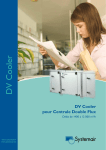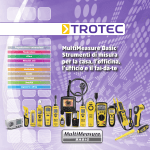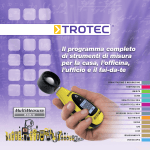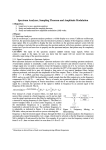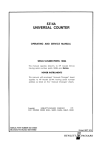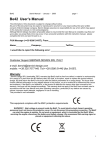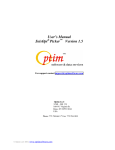Download Pond Building Series AD49150 Use and Care Manual
Transcript
POND LINER INSTALLATION BEFORE YOU BEGIN A flexible pond liner allows you the freedom to design and create your own personalized pond design. Before you get stated there are a few important things to consider: Location – your pond should be located in an area that offers a level space for the entire pond. Avoid low lying areas to protect against water runoff causing flooding or unwanted residues affecting your pond’s ecosystem. If your pond requires electricity, access to GFCI (ground fault circuit interrupter) power at a safe distance (five feet) is important. A healthy balance of sun and shad is ideal, with an average of six hours of sunlight per day for ponds that contain plants or fish. Ponds with aquatic life also need an area that offers shade during the hottest parts of the day. Ponds should not be located directly under trees. Consider adding protection from falling leaves or other organic debris that can decompose in the bottom of your pond without adding potentially toxic elements to your fish or plants. Size, Shape, and Depth - Decorative ponds must simply be deep enough to provide sufficient water for your pump and hide the plumbing components from view. Functional ponds (with plants and fish) should be a minimum of 18 inches in depth to accommodate plant life, with deeper areas in the 24- to 36-inch range as a minimum for exotic Koi fish. Creating shelves near the perimeter, six to eight inches below the intended water Angelo Décor International Inc. surface, provides an area for plants and helps secure the liner. Walls at a 30 T: (780) 453 - 6646 | F: (780) 453- 6620 degree angle provide a smooth transition to the perimeter. Angelo Décor International Inc. | 15840 – 118th Avenue | Edmonton, AB |T5V 1C4 WARNING o INSTALLATION Please check local building codes regarding maximum depths, and whether fencing or protective barriers are required to restrict access. o o 2. Dig and remove the soil from the outlined Ensuring the area is free from any underground utilities before digging begins, area. Remember: “Call before you dig”! objects that may damage the liner when it is Please follow all local electric codes, and use properly rated components Check for and remove any sharp installed. when adding electrical components to this feature to your project. Now add approximately 2 inches of sand over the entire area of the pond and CALCULATE YOUR POND SIZE: compact it. The sand will help to cushion and We recommend a minimum depth of 18 inches at the deepest area of the pond. protect the liner and prevent it from moving You will need to allow for overlap (typically 10 inches on each side) of the liner around. A pond liner underlay (sold around the perimeter of the pond. separately) can also be used for this step Note: For a typical installation, the finished perimeter size of the pond is calculated instead of sand. as follows: Liner width (in feet) subtracted by 4 feet 3. PLUS Open and spread out the liner. Drape the liner over the excavated hole, allowing Liner length (in feet) subtracted by 4 feet approximately 10 inches of overlap on each So for example, a 10 foot by10 foot liner will create a finished pond side. Check for and wrinkles or folds in the 6 feet wide by 6 feet long (at 18 inches deep). liner. The finished volume of your pond in gallons can be approximated by multiplying: Length x Width x Depth x 7.5. INSTALLATION 4. 1. Using a can of spray paint, garden hose or other marker, outline the perimeter of your proposed pond. any wrinkles or folds as the pond begins to fill with water. This will allow you to visualize what the finished pond will look like and ensure you are satisfied with the design and location. Slowly add water to the pond. Address Dig a small trench around the perimeter of the pond to hide the overlap. Cover it with landscaping stones or other materials.


